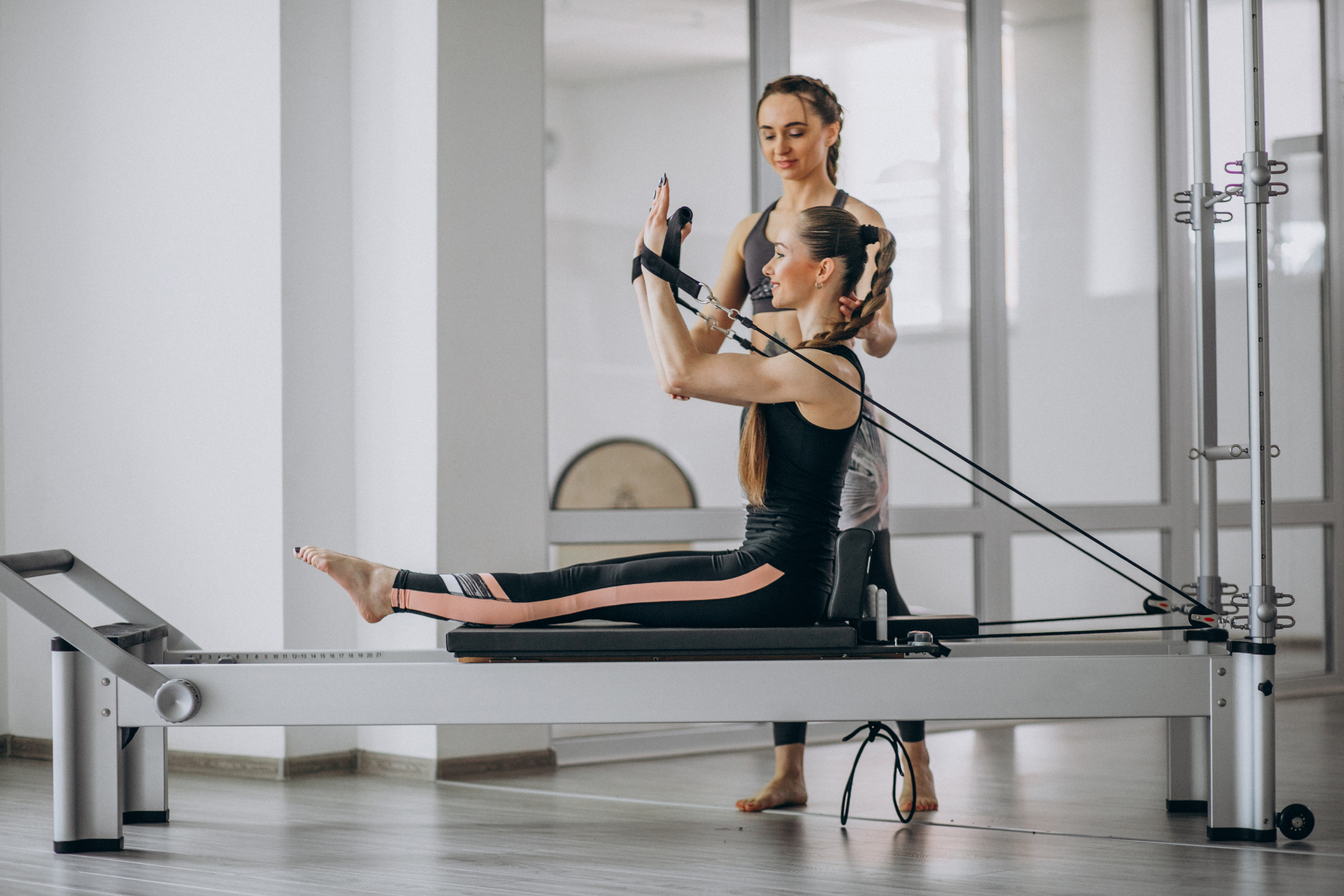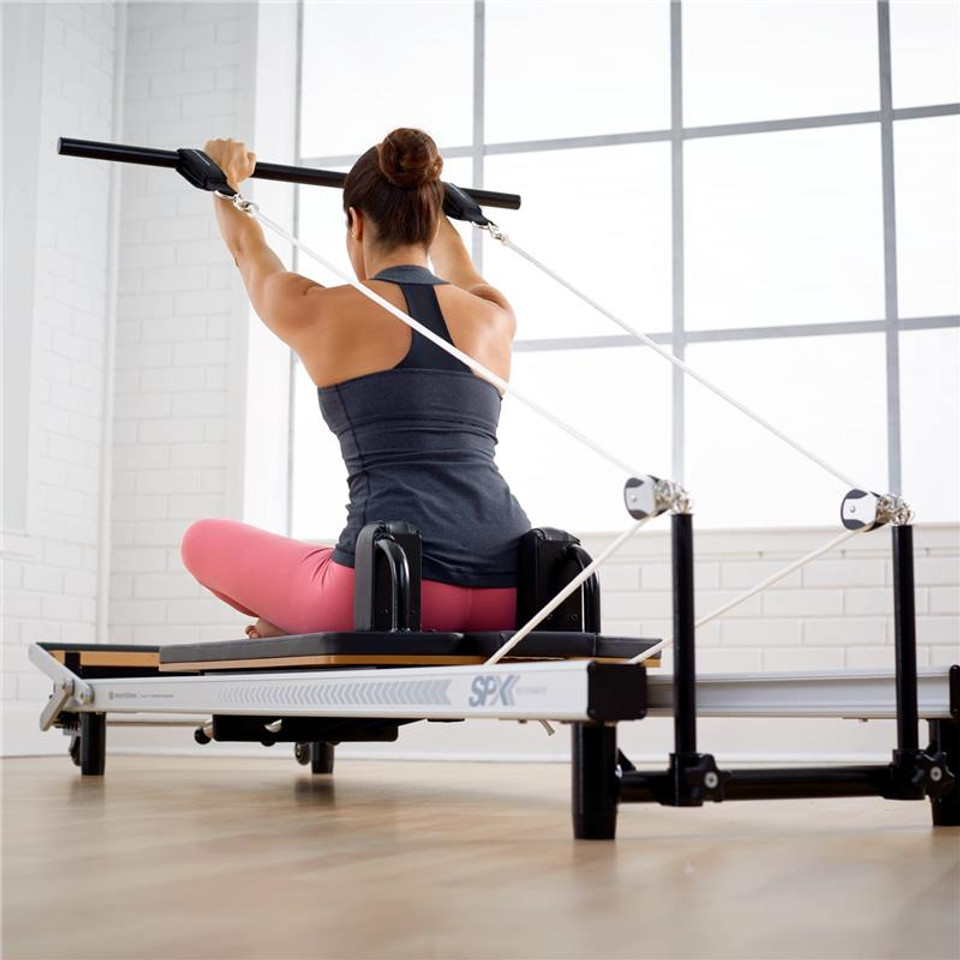Clinical Pilates vs. Reformer Pilates
Pilates is a popular workout choice to improve strength, flexibility, and posture. Most people are already familiar with regular or traditional Reformer Pilates; however, many confuse boutique reformer Pilates with clinical or rehabilitation Pilates.
To an inexperienced eye, “Clinical Pilates Therapy” and "Traditional Reformer Pilates” could appear almost the same, but their underlying goals and processes are starkly different.
Though both Pilates practices share foundational principles and equipment, their applications and benefits serve entirely different purposes. Exploring the contrast between them can help you decide which one best suits your needs.
1. Purpose and Goals
Clinical Pilates is basically a therapeutic approach grounded in medical principles. It focuses on rehabilitation and functional movement and is tailored for people recovering from injuries, dealing with chronic pain, or rebuilding their strength after surgery.
Suppose someone needs to recover from a back injury or other such surgery. In that case, Clinical Pilates focuses on controlled, gentle movements that strengthen the core and restore mobility without risking further strain.
Apart from surgeries, if you need to address postural alignment or chronic pain, then clinical Pilates can significantly improve and help manage these conditions compared to regular Pilates. In a gist, clinical Pilates is less about working up a sweat and more about carefully rebuilding the body’s foundation because the primary goal is healing and restoring function.
Compared to Clinical Pilates, Reformer Pilates focuses on general fitness. You can start with routine Pilates without any specific goal, simply to maintain your health. Regular or boutique Pilates sessions are often energetic and challenging to help tone your muscles and improve cardiovascular endurance. Unlike Clinical Pilates, it’s not specifically designed for rehabilitation.
2. Personalized Attention vs. Group Sessions
One of the standout features of Clinical Pilates is how personalized it is. After thoroughly evaluating the physical condition, every session is tailored to a patient's specific needs. Clinical Pilates exercises are customized based on the unique challenges of each individual; therefore, classes are intentionally kept small, usually limited to 1-5 participants.
In clinical Pilates, your therapist would provide one-on-one attention, make real-time adjustments, and closely monitor your progress. For example, if you’re working on regaining mobility after a knee injury, the instructor might adjust the intensity or technique of an exercise to suit your range of motion.
Contrary to that, Traditional Reformer Pilates takes a group fitness approach, typically hosting up to 20 participants per class. These sessions follow a standardized routine, with instructors offering modifications for different fitness levels. Group format is great for those who enjoy the energy and motivation of a group setting, but it lacks the individualized focus of Clinical Pilates.
3. Equipment and Technique
Both clinical and regular Pilates may incorporate the reformer machine in their workout plan, but its range and application vary greatly.
Clinical Pilates uses a broader array of tools, such as trapeze tables, Wunda chairs, and ladder barrels, to strategically target specific needs, offering adjustable support for safe, low-impact exercises for individuals with limited mobility or ongoing recovery. For example, the trapeze table may provide extra support if you’re recovering from a shoulder injury.
Reformer Pilates, on the other hand, stays true to its name by keeping the reformer machine at the center of its routines. You might occasionally use props like resistance bands or small exercise balls in boutique classes, but the focus remains mainly on the reformer’s spring-loaded resistance for diverse and challenging workouts.
4. Specialists vs. Coaches

Since Clinical Pilates is aimed at medical conditions, your instructors are physiotherapists or professionals with in-depth knowledge of anatomy and rehabilitation. Their expertise allows them to make medically informed decisions during exercise for complex conditions like post-surgical recovery or chronic issues such as osteoporosis.
Regular Reformer Pilates are typically taught by certified fitness instructors who guide you through dynamic, structured workouts. They’re skilled at creating challenging and fun routines. However, they don’t have the medical training to address complex rehabilitation needs or chronic conditions.
5. Cost and Accessibility
The tailored nature of Clinical Pilates comes at a higher cost due to the expertise of the instructors, variety of tools, and personalized attention. Sessions are often held at physiotherapy clinics or specialized health centers, making it a worthwhile investment for rehabilitation.
Reformer Pilates, in comparison, is more budget-friendly due to group-based classes, making it a practical option for those seeking regular long-term fitness sessions.
6. Target Audience and Applications
Clinical Pilates is ideal for recovering from surgery, managing chronic pain, correcting movement patterns, or enhancing postural stability.
Conversely, Reformer Pilates appeals to a broader audience, offering a low-impact yet high-intensity workout for individuals at varying fitness levels. Its adaptable routines can help improve strength and flexibility.
So, if your primary goal is recovery or managing a medical condition, Clinical Pilates ensures you’re in the hands of a specialist who understands your medical history. However, if your aim is general fitness, building strength, or improving flexibility in a cost-effective and accessible manner, Reformer Pilates will serve you well.

